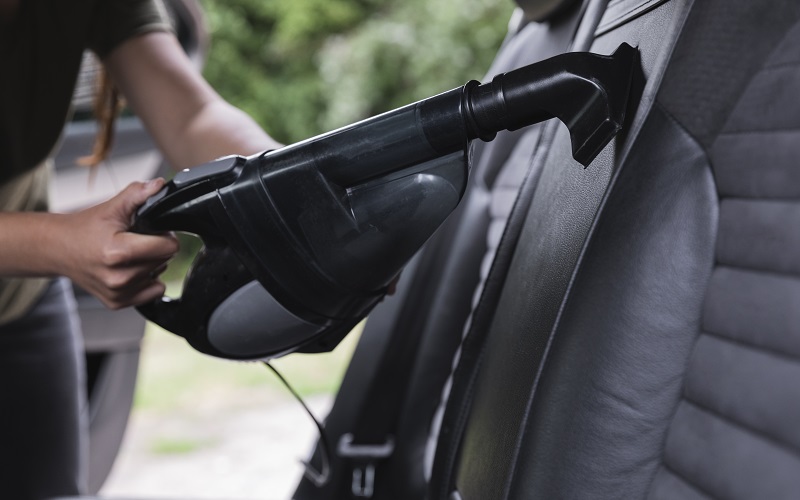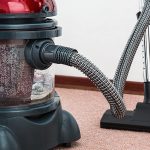Car Vacuum: How to Choose the Right One
-
 April 20, 2020
April 20, 2020Exterior and interior car maintenance is important for the vehicle’s appearance and safety of passengers. Therefore, you need to choose products carefully. When it comes to interior care, the car vacuum is one of the most important devices that you need. Vacuuming a car in a high-quality manner requires a high-quality vacuum cleaner. Even if you decide to buy a second-hand car vacuum, make sure it is of a reputable brand and performs to a high standard.
Currently, a wide range of vacuum cleaners are available. Car vacuum cleaners have various designs and differ in functionality and features. Below you can see the main features which you should take into consideration when choosing your machine.
Factors to Consider When Choosing a Car Vacuum
Size and Weight
The weight of the vacuum is a key feature. It is easier to operate with a smaller model. However, the smaller it is, the smaller and less powerful the motor is. So, you have to decide which of the two factors is more important to you. Additionally, a smaller car vacuum can be easier to transport as it is compact, with ergonomic design and light weight. Overall, check out motor power and sucking power, and if they work for you, take a comfortable small model.
Cord or Cordless
It is better and easier if the car vacuum does not have a cord. The disadvantage of battery-powered cordless vacuums is that you need to charge them before use. Also, their power might run out pretty fast. However, nowadays there are pretty good lithium-ion batteries that can run for at least 30-40 minutes. This is more than enough time to vacuum your car.
When picking a cordless car vacuum, check if it comes with a fade-free power feature. In case you don’t know what this is, here’s a quick explanation – unlike traditional batteries that fade out of power gradually, lithium-ion ones do not. In other words, you will not feel your car vacuum’s performance fade until it just stops abruptly at some point.
There are vacuum cleaner models that combine both features. They can work on battery and with a cord. If you select this type or a standard cord type, make sure to pick a model that has a built-in extension power line. Alternatively, choose one that you can plug into the car’s lighter. This will help you reach every place inside your car. Consider this one of the golden car interior cleaning tips you need to remember.
The Car Vacuum’s Motor Power
The efficiency of the car vacuum and, to a large extent, the suction power depend on the power of the motor. The maximum power consumption varies between 1200W and 2400W.
For some car vacuum cleaners, you cannot adjust the power. It always operates at maximum. However, we advise you to look for a vacuum cleaner with a potentiometer. This little tool will allow you to regulate the power of your car vacuum. For example, you can decrease it while vacuuming the upholstery and increase it when doing the seats.
Suction Power
Suction power is the ability of the car vacuum to collect more dust in less time. The higher the suction power is, the greater the cleaning efficiency of the vacuum cleaner is. It can vary between 250W and 600W. We recommend no less than 350W.
Usually, the suction power depends on the motor power, but it is not always the case. There are car vacuum models on the market that have a smaller motor power (i.e., consume less electricity), but still offer great suction. If you find this combination at an attractive price, go for it. If not, your safer bet would be on a higher motor power that would imply a higher suction power.
The Car Vacuum Dust Container
The capacity of the container determines the frequency of its replacement or cleaning. The smaller it is, the more frequently you’ll have to take care of it. In turn, the container’s size depends on the vacuum’s size. The type of the container is important, too.
Textile Bags
These bags do a pretty good cleaning job retaining particles of 100-200 microns in size. Yet, they require periodic cleaning and washing. In addition, the textile’s pore structure reduces the efficiency of the car vacuum cleaner’s suction power. This is why are rarely used, but can come in handy in the absence of a paper bag.
Paper Bags
Paper bags capture dust with particle sizes as small as 1-3 microns. They are thicker than textile bags and, therefore, do not affect the suction power. The bag’s opening closes on its own, providing comfort and hygiene when changing. Depending on the size of the bag and the frequency of use, paper bags require a replacement more often.
Cyclone Car Vacuum Cleaners – No Bag
The cyclone air filtration system works without a dust bag. Instead, a plastic container is used that can be easily cleaned and washed. This is one of the biggest advantages – no need to change the bag. With this type of car vacuum, the air rotates around the filter in the form of a spiral. The coarse particles move along the outer radius, and the small particles remain in the filter.
The main advantage of centrifugal cleaning is the stable suction pressure, which is independent of the accumulated dust in the container. Best results come in combination with fine filters, but this greatly complicates the design of the car vacuum. A disadvantage is that you should clean it more carefully.
Noise Level
The car vacuum’s noise level depends on the design, power and quality of the construction. Engine noise level increases as the engine wears off. The higher the noise level, the lower the engine quality. This is why quieter models have a longer service life. In modern vacuum cleaners, noise ranges from 54-85 dB.
Filtering System
Filters along the inlet air flow path determine the quality of cleaning. Engineers try to improve them by adding antibacterial components.
The purification system consists of several stages. Different car vacuums have a different number of levels. For instance, the first filter captures the dust from the air entering the pipes into the vacuum cleaner. It collects relatively large particles of dust. The air is then passed into the dust bag.
Then, the second filter is installed in the engine compartment and serves to collect fine dust. These are particles that are not visible to the eye but can slow the engine speed or damage it. This filter serves to protect the motor and does not affect the efficiency of air purification. It can be permanent or one-off. The permanent filter must be cleaned over a period of time as specified in the operating instructions. The one-off cannot be cleaned and therefore requires replacement. Either way, make sure to follow the instructions as this filter extends the life of your car vacuum.
Finally, there is a filter installed to capture the smallest particles, on the outlet air stream. These filters retain not only the solid microparticles, but also the bacteria.
Filters
Basically, there are two types of filters – electrostatic and HEPA ones. Electrostatic filters capture 80% to 99.99% of dust particles as small as 0.3 microns. They are less expensive than HEPA filters, but less efficient as well. Car vacuums with HEPA filters are more efficient and effectively eliminate radioactive dust. In fact, a HEPA filter holds up to 99.97% of all particles in the air. However, this is not that important for a car vacuum, because you actually clean the car with the doors open, so you can’t really filter all the air around you.
Replacing Filters
When you change the bag, it is advisable to replace each set of filters as well, especially the finest one, which is for the finer particles. If the filters are clogged, the engine will heat up the air flowing through the car vacuum. As a result, the bag can burst from the hot air. Even worse, the engine can burn. It’s a good thing that some vacuum cleaner models shit off automatically when the temperature rises.
Car Vacuum Extras
Different models can have different add-ons. These can enhance the interior detailing tools that you already have. A good one is an extendable brush to reach hard places. Another one is additional lights to see and help you clean under the seats. Other car vacuums come with service tools which focus suction in tight spaces.
Some models might have more than one additional tool. When you choose a car vacuum make sure it has at least a tool for the crevices.
A car vacuum extra that comes at an extra cost, though, is absorption of liquids. There are, indeed, car vacuums with water filters which can do that. Yet, you need to determine if that extra cost is worth your while before purchasing it. Yes, it can help you wash your seats. Yes, it can help you wash the car carpet. But how often will you do that? Weigh the pros and cons before proceeding.
In conclusion, there are numerous car vacuum models in the market that come in a variety of shapes, features, and prices. Before you decide which one you want to buy, think about how often you will use it and what matters most to you. Either way, once you make your choice, make sure to protect your investment by not forgetting to maintain the vacuum cleaner properly. Still, if you want more free time and a super clean car, you can just schedule an appointment with DetailXPerts. We can do everything for you while you are doing something else or just resting.
If you want more helpful information about your car, please sign up for our newsletter.
Featured photo Designed by Freepik














